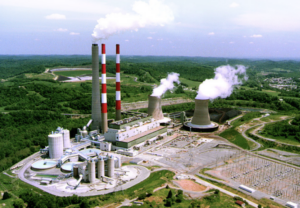Repair of the damaged containment structure at Progress Energy’s Crystal River nuclear power plant in Florida will likely hover at $1.5 billion, but it could escalate to as much as $3.5 billion and take eight years to complete in the worst-case scenario, an independent review of a potential repair plan shows.
The review, performed by Charlotte, N.C., consultant Zapata Inc., was commissioned by Duke Energy this March before its merger with Progress Energy. It reportedly found that the "current repair plan appears to be technically feasible, but significant risks and technical issues still need to be resolved, including the ultimate scope of any repair work," Duke Energy said in a statement on Monday. This could result in a cost estimate that far exceeds Progress’ prior assessment of $900 million to $1.3 million. The report estimates repairs will cost about $1.4 billion, but more extensive work based on potential unplanned scenarios would see costs trending upward.
A worst-case scenario assumes that the company would perform Progress Energy’s more limited scope of work, but that at the conclusion of that work, additional damage would occur in the dome and in the lower elevations, which would force the replacement of each. That scenario would reportedly cost up to $3.43 billion with a 96-month schedule, Duke Energy said in a statement profiling the Zapata report.
Now a Duke subsidiary, Progress Energy said it had not made a final decision on whether to repair or retire the 860-MW Crystal River reactor. That decision and schedule will be driven by the final analysis, which is yet evolving and will provide increasing detail on cost and schedule expectations.
"We will proceed with a repair option only if there is a high degree of confidence that the repair can be successfully completed and licensed within the final estimated costs and schedule, and is in the best interests of our customers, joint owners and investors," the company said.
Initial damage to the plant’s containment building occurred in late 2009 while workers were creating an opening in the structure to facilitate the replacement of the steam generators inside. The work to create the opening caused a delamination (or separation) in the concrete at the periphery of the containment building. The unit was already shut down for refueling and maintenance at the time the damage was found.
In mid-March last year, during the final stages of returning the unit to service, work was suspended while engineers investigated and subsequently determined that a second delamination had occurred in another area of the structure. Similar to the initial delamination, the second separation occurred about 9 inches from the outer surface of the concrete. The Crystal River Nuclear Plant containment structure is about 42 inches thick, contains both horizontal and vertical tensioned steel tendons, and is lined with a 3/8-inch-thick steel plate.
The plant had originally been slated to restart in April 2011, following the uprate, but in June 2011, the company said restart would not occur until at least 2014.
Meanwhile, the nuclear plant’s woes were highlighted as Progress Energy merged with Duke Energy in July and played a role in the surprise appointment of Duke Energy Corp. CEO Jim Rogers as CEO of the merged firm, not Progress CEO Bill Johnson, as had been expected.
Rogers in July told regulators at a North Carolina Utilities Commission hearing—called to investigate the surprise decision—that Duke Energy Corp. directors were concerned that Johnson’s management style was "autocratic." Rogers also said the board was concerned about problems at Progress’ Crystal River reactor, saying Duke would "pour money" into Progress’ operating reactors to "bring them back to excellence."
The merger deal, valued at $32 billion, made Duke one of the largest U.S. power companies, with 57 GW of generating capacity.
Sources: POWERnews, Zapata Inc., Duke Energy, Reuters
—Sonal Patel, Senior Writer (@POWERmagazine)








